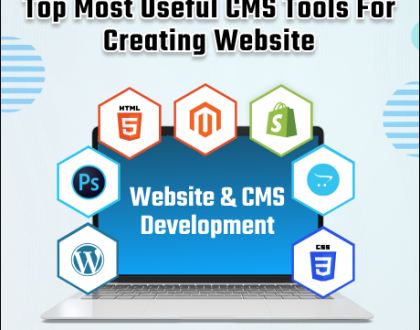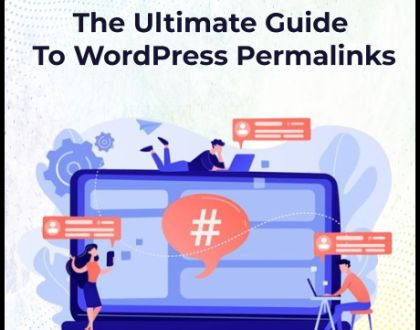
WordPress is not just a blogging platform; in fact, it’s a powerful content management system (CMS) that can handle a wide range of content types. To begin with, one of its most flexible features is Custom Post Types (CPTs), which not only allow you to extend the default post and page functionality but also enable you to create specialized content types tailored specifically to your needs. As a result this flexibility significantly improves how content is organized. Moreover, CPTs contribute to enhancing your site’s functionality, making it easier to manage diverse content types efficiently. In this blog, we’ll dive into how you can leverage WordPress Custom Post Types. Specifically, we’ll explore step-by-step methods to better organize your content and, ultimately improve your site’s performance. In other words using CPTs can transform the way you handle content, ensuring a more streamlined and user-friendly website experience.

Learn how to manage custom post types in WordPress to organize your content better. #text #design #WordPress
What Are Custom Post Types?
Custom Post Types are a way to create different content structures within WordPress. While the default post type is for blog posts and the page type is for static content, CPTs enable you to define new content types, such as portfolios, testimonials, products, events, or any other content that requires its own structure and organization.
Why Use Custom Post Types?
1. Enhanced Organization:
CPTs allow you to categorize and manage different types of content separately, making your WordPress admin interface cleaner and more organized.
2. Custom Fields:
CPTs support custom fields, which let you add additional metadata and attributes to your content, such as client names, project dates, or product specifications.
3. Tailored Templates:
Each CPT can have its own set of templates, allowing for customized design and layout options that match the content type.
4. Improved Search and Filtering:
Custom Post Types make it easier to filter and search for specific content types, improving the overall user experience.
How to Create and Use Custom Post Types
1. Register a Custom Post Type
You can register a Custom Post Type using code in your theme’s `functions.php` file or by using a plugin. Here’s a basic example of how to register a CPT for “Events”:
function create_event_post_type() {
register_post_type('event',
array(
'labels' => array(
'name' => __('Events'),
'singular_name' => __('Event')
),
'public' => true,
'has_archive' => true,
'supports' => array('title', 'editor', 'thumbnail', 'excerpt', 'custom-fields'),
'menu_position' => 5,
'menu_icon' => 'dashicons-calendar-alt',
)
);
}
add_action('init', 'create_event_post_type');
2. Add Custom Fields
To add custom fields, you can use plugins like Advanced Custom Fields (ACF) or Meta Box. These plugins offer a user-friendly interface to create and manage custom fields for your CPTs. For example, if you’re creating an “Events” CPT, you might add fields for event date, location, and speaker.
3. Create Custom Templates
You can create custom templates for your CPTs by adding template files to your theme. For example, if your CPT is called “event,” you can create a template file named `single-event.php` for single event posts and `archive-event.php` for the archive page of all events.
4. Display Custom Post Types
To display your CPTs on your site, you can use WordPress’s built-in query functions or custom loops. For example, to display a list of events on a page, you might use the following code:
$query = new WP_Query(array(
'post_type' => 'event',
'posts_per_page' => 10,
));
if ($query->have_posts()) :
while ($query->have_posts()) : $query->the_post();
// Display your event content here
the_title('<h2>', '</h2>');
the_excerpt();
endwhile;
wp_reset_postdata();
else :
echo 'No events found';
endif;
5. Manage Custom Post Types
Custom Post Types appear in the WordPress admin menu just like regular posts and pages. You can manage them using the standard WordPress interface, and they will also be subject to WordPress’s built-in features like categories, tags, and custom taxonomies.
Conclusion
Using WordPress Custom Post Types is an excellent way to enhance your site’s organization and functionality. To begin with, by creating specialized content types, you can not only better manage your content, but also tailor your site’s design while simultaneously improving the user experience. Whether you’re running a portfolio site, an e-commerce store or a content-rich blog, Custom Post Types offer the flexibility you need to make WordPress work for your specific requirements. In addition CPTs allow you to customize your site in ways that go beyond the default options thus providing a more personalized touch. Furthermore they help in streamlining your workflow, making it easier to organize content efficiently. Therefore start exploring CPTs today to see how they can transform your content management and site organization. In doing so you’ll unlock new possibilities for your website’s structure and functionality ultimately leading to a more cohesive and engaging user experience.
Recommended Posts

Top Most Useful CMS Tools For Creating Websites
September 12, 2024

The Ultimate Guide To WordPress Permalinks
September 11, 2020

Grow Your Business Fast: Proven Strategies For Success
November 7, 2024
